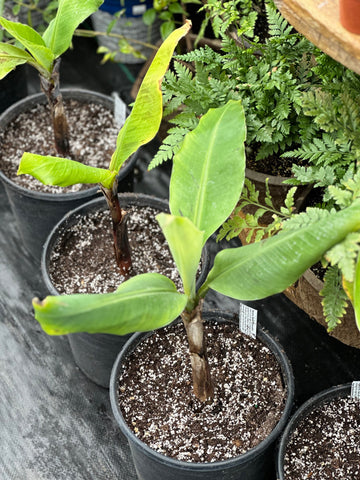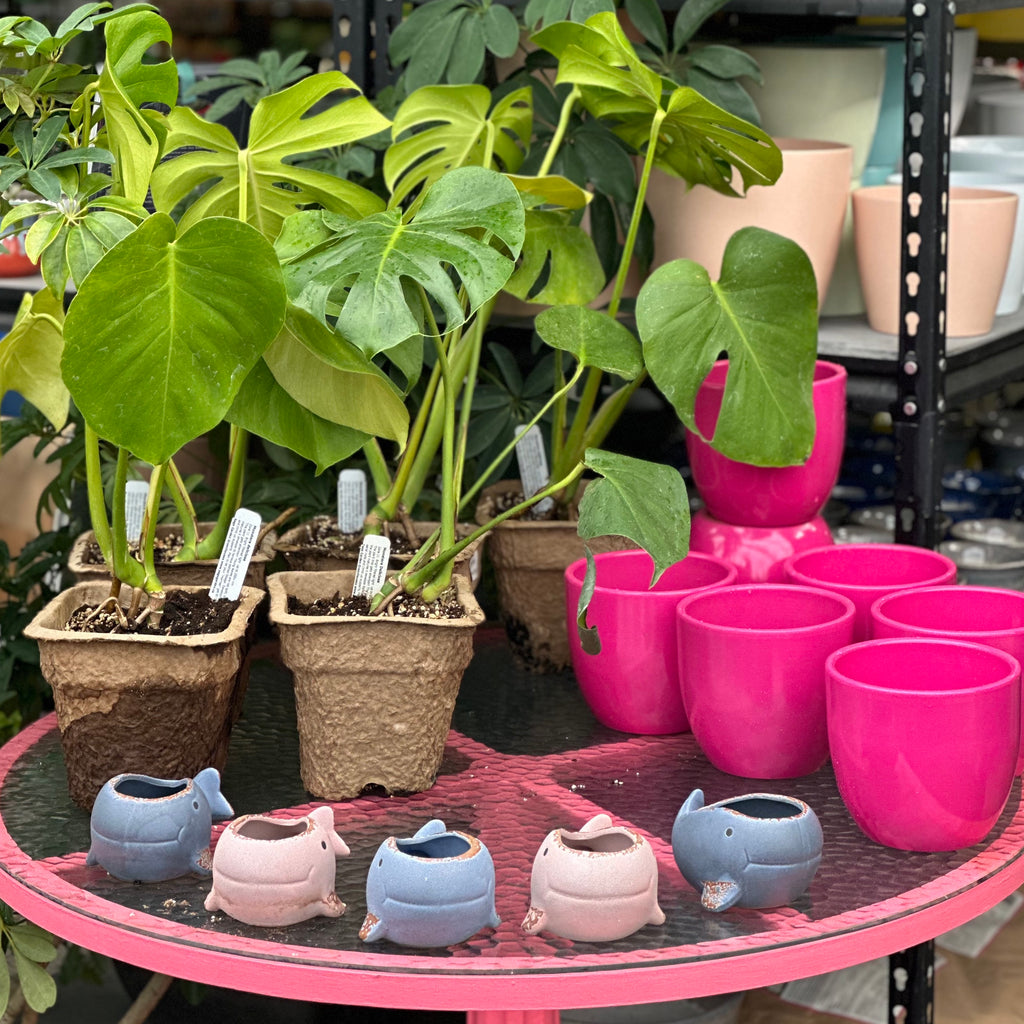Although not required, FUN spring preparations such as repainting plant displays (for home gardeners, perhaps plant stands). This table was a dull retro-yellow until a few days ago but now has a whole new vibe!
There are the obvious steps that most home gardeners go through as spring approaches: soak up inspiration from websites and social media, order new seeds, leaf through old seed packs, sketch out ideas or make lists, reminisce while looking at photos from seasons past, become a little more attentive to plants wintered indoors... start some seeds. As we have been preparing for spring around Sage Garden, it occurs to me that there is a significant overlap between our greenhouse process and that of home gardeners; but, there are some helpful activities that get less attention in the discussion. These are the focus of today's blog.
Tip #1: Organize first, "do" second
Many gardeners are doers, and there may be nothing better than jumping right into seed-starting or any of the other exciting spring gardening activities that help get us through winter. However, it is not uncommon for us to hear from folks feeling overwhelmed by the time late March or April comes around, and all of that early "action" and zesty energy has become a lot of work. Self-contained winter projects are one thing, but anything related to spring benefits from a plan. For example, if you do not have an ideal place to start seeds in late winter it is very worth putting seed-starting off until conditions are better, or you have time to set up a proper seed-starting space. At the greenhouse, we've frequently had to apply this discipline and have learned over so many seasons and situations that plants always grow better (and more easily) when you wait for the right moment... even if that feels late!

Seed-starting success definitely has a lot to do with timing, but there is also some flexibility. Early starts like artichokes, onions, and hot peppers are often started in February, but if you are not ready don't sweat it... much better to wait and start seeds once you have the time and space.
Tip #2: Spring cleaning is a thing!
Growing and planting indoors inevitably involves at least a little mess, whether from spilled soil, fallen leaf debris, splashed water or possibly plant food. This tip is equally relevant to those who winter plants indoors and those setting up an indoor seed-starting space since both situations are plant-healthier if kept tidy. Around the greenhouse, we do deep cleaning of plant spaces several times a year on top of ongoing basic maintenance, and as we gear up for spring this is a large priority. We sweep up really well under tables and displays, wash pots and saucers, vacuum where we can (including soil surfaces to remove fallen leaf debris), and change-out surfaces that are tired. We also "deep clean" overwintered plants, removing winter scruff or cutting plants back and in some cases wiping down the inner rim and outsides of pots. This is also an opportunity to discover any possible pest, disease, or root concerns, and also identify plants that can be divided or up-sized. Tidying also helps with locating tools or accessories that will help with growing (since many of these items are only used for a short time each year, they are easily tucked away!), and also clarifies what space you actually have to grow spring starts.
A tidy growing space is mentally liberating and offers spring plants the best odds for success, so we highly recommend a little spring cleaning before planting starts.

Although the scope of greenhouse deep cleaning is larger than most home gardeners need to think about, the fundamentals are similar: remove plant and soil debris, organize spaces, and make sure the space is well set up for whatever spring tasks you are planning to undertake.
Tip #3: Look for plants that will respond to re-potting
If you are someone who winters plants indoors, you have the opportunity to make at least some of your plants stronger and more productive by repotting to larger containers (this rule of thumb applies less to specialty plants like carnivorous or orchids, but is very relevant to many herbs and mid to high zone houseplants). While the obvious benefit of repotting is allowing plants to grow larger, the side benefit is lower maintenance requirements for the grower... which is extra helpful as we head into the busy spring (reducing feelings of being overwhelmed is possibly the number one way to really enjoy gardening). The reduced maintenance comes from liberating pot-bound roots and adding more soil volume to hold water and nutrients between applications, which of course also just makes plants healthier and thus less fussy.
A common rule of thumb is to go one pot size larger, but this is really only true for classic tropical house plants. For plants with dense, fibrous roots, and particularly faster-growing ones like figs or bananas, you can confidently go several pot sizes larger when repotting in late winter/spring. Just be sure to crack open the roots as you transplant, so that they will quickly spread into the new soil!

These bananas have just been repotted from 6" containers to 2-gallon pots, technically a jump of several pot sizes. The benefit will be fruit, faster!
Tip #4: Growing from cuttings is a fantastic way to start spring plants
Spring planning almost always focuses on seed-starting, which of course makes sense when you consider that veggies and annual flowers are predominantly propagated by seed. But, many worthwhile plants grow quickly and easily from cuttings in late winter/spring. At Sage Garden, we have two main cutting-propagation seasons: September and February. The fall cuttings are usually woodier material that roots slowly but surely over winter, while February cuttings are vegetative tip cuttings that typically root within two to four weeks. All mints, sages, rosemary, lemon verbena, myrtle and most thyme that we offer are cutting-grown, which allows us to offer unique cultivars that are not available from seed. Geraniums, many perennials, and higher-zone fruiting plants are also prime examples of cutting-grown plants at Sage Garden.
Growing plants from cuttings does require a warm root zone, as well as a way to prevent vegetative cuttings from wilting. Heat mats and humidity domes are the most popular solutions for rooting, but warm spaces (like the top of the fridge) and Zip-Lock bags can be effective DIY solutions.
Of course, propagating by cuttings requires having plant material to start with! If you don't have mother plants, ask around... gardeners love to share.

We start spring cuttings in trays and use our general-purpose organic potting/seed-starting mix. In some cases we add about 25% extra coarse vermiculite, to increase aeration.

It is really important to prevent cuttings from wilting, so we mist them daily and use humidity domes to keep them perky!

Unique varieties, like this Golden Rain rosemary, can only be grown from cuttings as the golden leaf variegation is not stable from seed. This is very typical of herb cultivars, many of which do not come true from seed (particularly for botanical perennial types, like mints, sages, thyme and rosemary).
If you have questions about getting your spring garden growing, or tending to your overwintered plants, we'd be happy to help! The greenhouse store is open during winter hours this week, and our spring hours begin March 2.
Wishing you every success with your spring planning & planting process... and look forward to getting spring and summer!








